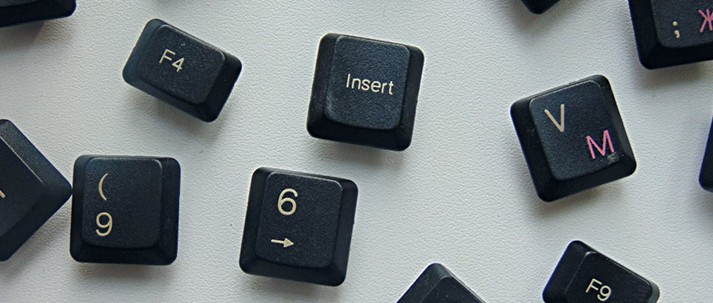
Whilst not as glamorous as putting new plugins through their paces, making sure your workflow is as speedy as you can make it is an essential part of the production process.
When inspiration strikes, making sure you can get your idea into a DAW quickly and easily could be the difference between creating some music or never getting started at all.
In our experience, having to spend time setting up channel strips or selecting tools and windows that get used repeatedly tends to sap the creative energy out of a session.
We're sure this is a common problem producers face, so we've compiled a selection of our favourite time-saving tips to keep that all important creative spark from going out.
Sample Storage
Apologies if this seems completely obvious but the importance of keeping a tidy sample database can not be overstated. When you're working on a track and you've decided you'd like to include a particular kind of sound next, being able to quickly audition lots of sounds quickly pays dividends.
The way to do this is to make sure all your samples and loops are kept in one place on your hard drive and that similar sounds are grouped together in sub folders.
It's all about being able to quickly find the right sound for the moment. So if you tend to think of your sample library in terms of genres, then perhaps you should arrange your collection by sample pack.
If you think more in terms of instruments or parts, then it will be incredibly useful to group all your synth loops together, or keep all your drum hits in a single folder for example.
Of course if you're using formats like apple loops, then to a certain degree you can rely on tags to help organise your loop collection (this is why we're so pedantic about our tagging!).
However, you might come across loops that haven't been so carefully tagged or have an extensive collection of hits, so it's still a great idea to keep sounds organised in your own folder system.
Command the Keys
Key commands will save you hours of production time, guaranteed. You don't realise how much time it really takes to point around a screen and click on different windows, tabs and dropdowns until you start using key shortcuts.
Whilst it's useful to learn the built-in commands that your DAW comes preloaded with, creating your own set of shortcuts for the processes you use the most might be the single biggest improvement to production efficiency that you can make.
For example, we do a lot of bouncing and exporting of audio here at ModeAudio, so rather than having to click on a menu, navigate down to the right option then click on the resultant dropdown for every single sound, we simply hit our two shortcut keys. Easy!
Remember your shortcuts can cover everything from the largest to the smallest of tasks. Something we used to find very time consuming in Logic was creating a cycle that snapped to the start and end of a certain block of audio.
With our key command set up, two buttons are now all we need to press to get this done instead of endless clicking and dragging.
Preset Your Plugins
If you have a number of go to synths that you use again and again, with particular settings that you like to build your sound from, then saving basic presets in a folder will also save you hours of time in the long run. Basic arps, thick sub basses, analogue-style leads - the list could be endless.
These simple presets might also help you to get out of a creative rut by allowing you to work on new sounds based on ones you know you already like. Checking out our selection of synth presets is another option here.
Presets can also come in handy simply for setup purposes - see our Ultrabeat Setup tutorial for a good example of this!
Templates are a Producer's Best Friend
Another form of preset that might save you hours of clicking and dragging before you've even played a note are project templates. If you pretty much always have your drums routed to a bus channel for example, why not save a template session that contains this setup so you don't need to wire it in every single time'
Many of our loops and hits packs actually come with project templates for a number of the major DAWs, to help get you started in this regard.
Know Your DAW
Again, this seems obvious but the point is still a very useful and valid one - if it's taking you a lot of time to do something in your DAW, then it's well worth researching to see if there's a function that'll do some of the work for you.
To give you an example, it still embarrasses us to admit that in order to achieve curved automation in Logic, we used to dial in about 30 different node points to mimic a smooth curve.
If we'd only taken the time to look online or RTFM, we'd have quickly discovered Logic's curved automation tool waiting patiently in the wings to save the day!













